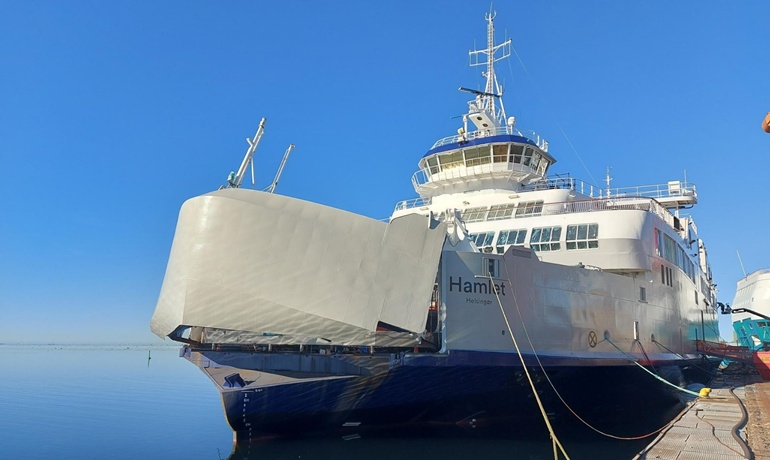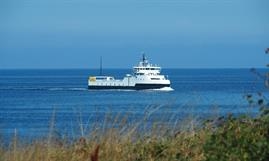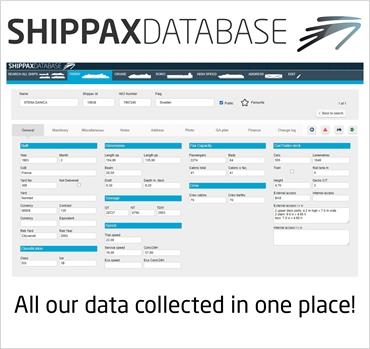
HAMLET becomes Öresundslinjen’s third fully electric ferry
FerryWith the conversion of the third ferry to battery power, Öresundslinjen is continuing its aim to establish a green maritime corridor between Sweden and Denmark. The ferry HAMLET has now arrived in Landskrona, where its traditional diesel propulsion is being replaced with modern battery systems.
When HAMLET leaves the Oresund DryDocks yard in Landskrona in early December, after a three-week docking period, the ferry will have been converted from fossil fuels to fully electric operation using sustainable energy from wind, water, and solar sources.
With three battery-powered passenger ferries soon operating on the route between Helsingborg and Helsingør, Öresundslinjen will be able to describe itself as a multi-vessel green maritime corridor. This means that the overall climate impact on the Øresund will decrease further.
Since 2018, the ferries AURORA and TYCHO BRAHE have operated across the sound using battery propulsion, and in autumn 2021, the world’s then largest battery pack – with a capacity of 6,400 kWh – was installed on TYCHO BRAHE. Öresundslinjen thus became the first ferry operator in the world to run electric RoPax ferries on a high-frequency route.
The conversion of HAMLET has been in preparation for several years and involves a series of technical upgrades.
“During two previous dockyard visits, we reinforced the decks that will support the battery packs and prepared the technical upgrades and cabling. We can now complete the process by installing 2,800 kWh across four battery containers on deck 6, along with ABB modules that enable charging on both sides of the sound,” explains Kristian Durhuus, CEO of Molslinjen.
Previously, the crossing between Helsingborg and Helsingør produced annual emissions of 37,800 tonnes of CO2. After AURORA and TYCHO BRAHE were converted from diesel to battery power in 2018, emissions fell to 10,200 tonnes in 2024.
With the conversion of HAMLET, emissions will be reduced further – to 2,500 tonnes of CO2 per year once the vessel’s battery operation is fully in place. In total, the modernisation of the three ferries will reduce emissions by 35,300 tonnes of CO2 annually.
“Wherever possible, we renovate and modernise our existing vessels. By upgrading them with the latest technology, our ferries – TYCHO BRAHE (1991), AURORA (1992), and HAMLET (1997) – have gained extended service life and can operate safely and sustainably for many years to come,” says Kristian Durhuus.
The Swedish company Echandia is supplying the battery package for HAMLET – the same supplier that previously provided batteries for Molslinjen’s ferries on the Alslinjen and Samsølinjen routes.
“We are proud to be able to complete the cycle of the pioneering sustainability project we began in 2018. It has required both determination and significant investment, but it also contributes to a better environment for both the marine ecosystem and the inhabitants of the Øresund region,” concludes Kristian Durhuus.
© Shippax
Nov 17 2025
Most read
Shippax Ferry Conference - Timetable released and early confirmed speakers announced (Upd.17 Nov)
Nov 12 2025
DFDS' earnings fell by almost a third in Q3 – announces layoffs as part of cost reduction
Nov 06 2025






















